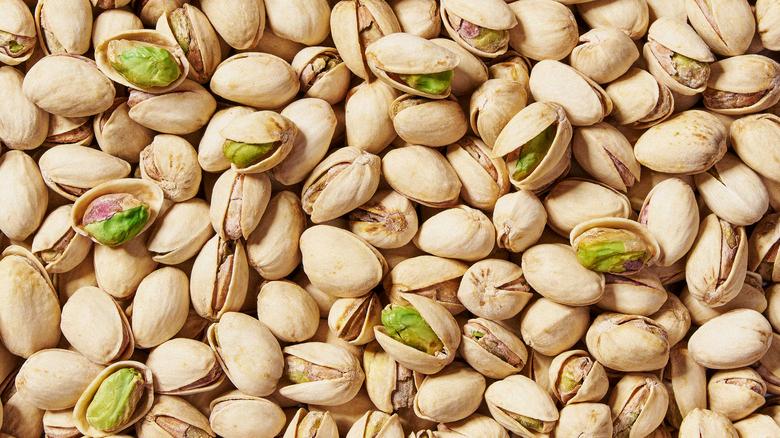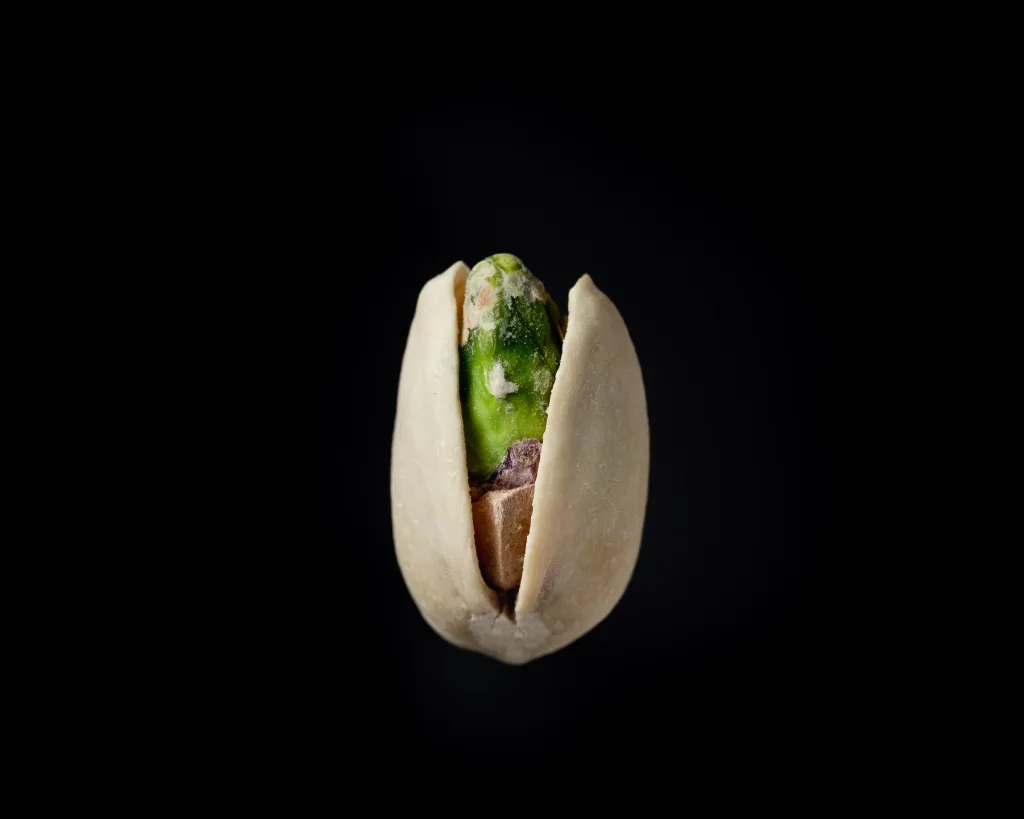Pistachios have long been considered a delicacy, and their price tag reflects their popularity. But have you ever wondered why pistachios are so expensive? Let’s delve into the factors that contribute to their high cost.
First and foremost, pistachios require a specific growing environment. These nuts thrive in regions with a Mediterranean climate, such as California, Iran, and Turkey. The ideal combination of warm days and cool nights allows the pistachio trees to flourish and produce high-quality nuts. However, this limited geographic range means that pistachios cannot be grown in just any part of the world, making them a relatively rare commodity.
Furthermore, the harvesting process of pistachios is labor-intensive. Unlike other nuts that fall to the ground when they are ripe, pistachios must be mechanically shaken from the trees. This requires specialized equipment and skilled workers who carefully handle the trees to ensure the nuts are not damaged. The meticulousness required during the harvesting process adds to the overall cost of pistachios.
Additionally, pistachios have a unique characteristic that further contributes to their price tag. Unlike other nuts, pistachios have a natural protective shell that must be removed before consumption. This extra step in processing increases the production costs and, in turn, the price of the nuts. Shelling pistachios is a time-consuming and labor-intensive task, which adds to the overall cost of bringing the nuts to market.
Moreover, pistachio trees have a cyclic bearing pattern, meaning they produce a large crop in alternate years. This irregularity results in fluctuations in the supply of pistachios, affecting their price. When there is a bumper crop, the prices tend to be lower due to the abundance of supply. Conversely, during years of low production, the prices skyrocket as demand outpaces supply.
The growing popularity of pistachios worldwide has also contributed to their high cost. As more people recognize the health benefits and delicious flavor of these nuts, the demand continues to rise. This increased demand, coupled with the limited supply, further drives up the price of pistachios.
Several factors contribute to the high cost of pistachios. Limited growing regions, labor-intensive harvesting processes, the need for shelling, cyclic bearing patterns, and growing demand all play a role in the expensive price tag of these beloved nuts. So the next time you indulge in a handful of pistachios, savor their unique flavor and consider the intricate journey that brings them to your plate.
Are Pistachios The Most Expensive Nut?
Pistachios are not the most expensive nut. While they are a popular and delicious nut, they are not as costly as macadamia nuts. The price of pistachios is influenced by factors such as the quality, size, and origin of the nuts, as well as market demand. However, compared to macadamia nuts, pistachios are generally more affordable.

Is It OK To Eat A Lot Of Pistachios?
Consuming a large quantity of pistachios may not be advisable. While pistachios are indeed nutritious and offer various health benefits, it is essential to exercise moderation when incorporating them into your diet. Here are a few reasons why it is not recommended to eat a lot of pistachios:
1. High Caloric Content: Pistachios are energy-dense, meaning they contain a significant number of calories. Eating excessive amounts of pistachios can lead to an overconsumption of calories, potentially resulting in weight gain or hindering weight loss goals.
2. Fat Content: While pistachios contain healthy fats, such as monounsaturated and polyunsaturated fats, they are still high in fat content. Consuming excessive amounts of these fats can contribute to an increased calorie intake and potentially raise cholesterol levels.
3. Sodium Content: Although plain, unsalted pistachios are recommended, many commercially available pistachios are salted. Excessive sodium consumption can lead to high blood pressure and negatively impact heart health.
4. Portion Control: It is crucial to consume pistachios in moderation due to their caloric density. A serving size of pistachios is typically around 1 oz or 49 nuts, providing approximately 160 calories. Eating more than this recommended portion may lead to an imbalance in your overall calorie intake.
5. Nutrient Imbalance: While pistachios offer various health benefits, relying solely on them as a primary source of nutrition may result in an imbalance of other essential nutrients. It is important to have a well-rounded diet that includes a variety of food groups to ensure you meet all your nutritional needs.
While pistachios are a nutritious food, it is best to consume them in moderation. Stick to plain, unsalted pistachios and be mindful of your portion sizes. Incorporating a variety of other nutrient-rich foods into your diet is essential for overall health and wellbeing.
Why Are Pistachios Good For You?
Pistachios are highly beneficial for your health due to their rich nutritional profile. Here are some reasons why pistachios are good for you:
1. Healthy Fats: Pistachios are packed with healthy fats, such as monounsaturated and polyunsaturated fats, which are known to support heart health and reduce the risk of heart disease.
2. Fiber: Pistachios are an excellent source of dietary fiber, which aids in digestion, promotes regular bowel movements, and helps maintain a healthy weight by keeping you feeling full for longer periods.
3. Protein: These nuts are a good source of plant-based protein, making them an ideal snack for vegetarians and vegans. Protein is essential for muscle growth and repair, as well as for maintaining healthy hair, skin, and nails.
4. Antioxidants: Pistachios contain high levels of antioxidants, including lutein, zeaxanthin, and gamma-tocopherol. These antioxidants help protect your cells from damage caused by free radicals, reducing the risk of chronic diseases, such as cancer and heart disease.
5. Nutrient-Rich: Pistachios are loaded with various nutrients, including vitamin B6, thiamine, copper, and manganese. Vitamin B6 is essential for brain development and function, thiamine aids in energy metabolism, and copper and manganese contribute to the overall health of your body.
6. Weight Management: Despite being calorie-dense, pistachios can actually aid in weight loss. The combination of healthy fats, protein, and fiber helps you feel satisfied and reduces cravings, potentially leading to a lower overall calorie intake.
7. Cholesterol and Blood Sugar: Regular consumption of pistachios has been associated with improved cholesterol levels by increasing levels of beneficial HDL cholesterol while lowering LDL cholesterol and triglycerides. Additionally, pistachios have a low glycemic index, meaning they have a minimal impact on blood sugar levels.
8. Eye Health: The antioxidants lutein and zeaxanthin found in pistachios contribute to eye health by reducing the risk of age-related macular degeneration and cataracts.
9. Gut Health: Pistachios contain prebiotic fiber, which serves as food for beneficial gut bacteria. This promotes a healthy gut microbiome and supports proper digestion and nutrient absorption.
10. Blood Vessel Health: Pistachios have been shown to improve blood vessel function and reduce inflammation, which can lower the risk of cardiovascular disease.
Including pistachios in your diet can provide a wide range of health benefits, supporting your overall well-being and contributing to a healthy lifestyle.
How Many Pistachios A Day Should You Eat?
According to most nutritionists, it is recommended to consume no more than two ounces or 56 grams of pistachios per day. This roughly translates to about 90 pistachios, assuming they are shelled. It is important to note that this serving size is a general guideline and may vary depending on individual dietary needs and health conditions.
Eating pistachios in moderation is advised due to their high calorie and fat content. While pistachios contain healthy fats, excessive consumption can lead to weight gain and potential health issues. Therefore, it is essential to practice portion control and be mindful of the quantity consumed.
In addition to monitoring the number of pistachios eaten, it is also crucial to ensure adequate hydration. Pistachios, like other nuts, have a high fiber content, which can cause digestive distress if not accompanied by sufficient water intake. Drinking enough water helps in the digestion process and prevents stomach discomfort or bloating.
Nutritionists recommend consuming a maximum of 56 grams or two ounces of pistachios per day, equivalent to approximately 90 shelled pistachios. It is important to be mindful of portion sizes and to maintain proper hydration when including pistachios in your diet.

Conclusion
Pistachios are a highly nutritious and beneficial food for overall health and wellbeing. Packed with healthy fats, fiber, protein, antioxidants, and essential nutrients like vitamin B6 and thiamine, they offer a range of health benefits. These include potential weight loss effects, improved heart health by lowering cholesterol and blood sugar levels, and promoting a healthy gut, eye, and blood vessel function.
However, it’s important to consume pistachios in moderation, with nutritionists recommending no more than two ounces or approximately 90 pistachios per day. Opting for plain, unsalted pistachios in their shells is ideal for portion control and avoiding overconsumption. Additionally, it is crucial to drink an adequate amount of water when eating pistachios to aid in digestion and prevent any potential stomach upset.
Incorporating pistachios into a balanced diet can contribute to a healthier lifestyle and support various aspects of one’s health. So, enjoy the delicious taste and numerous benefits of pistachios while being mindful of portion sizes and staying hydrated for optimal digestion and overall wellbeing.
